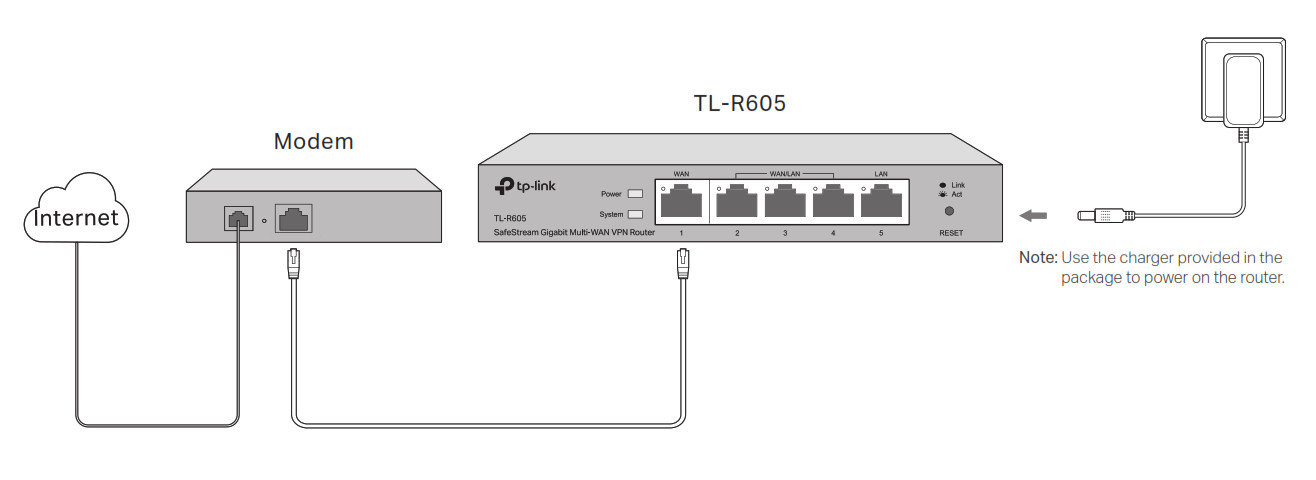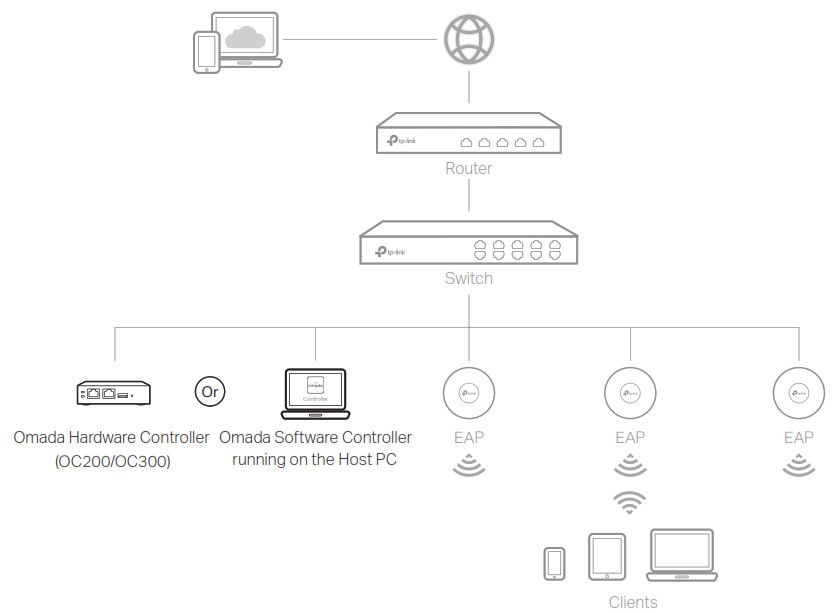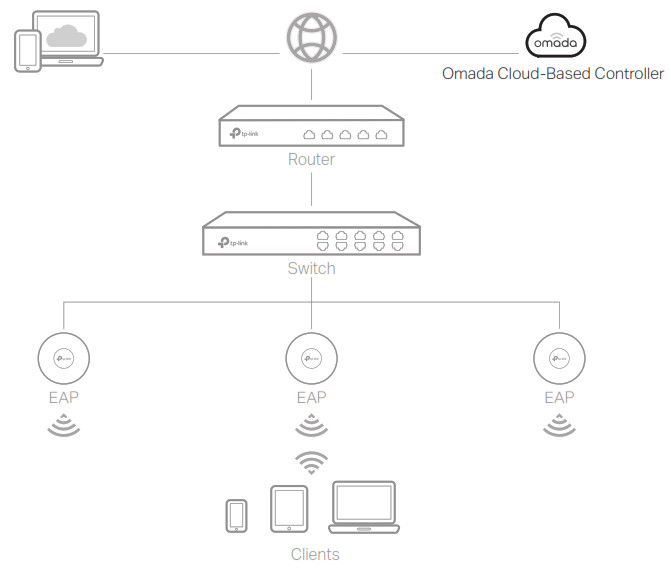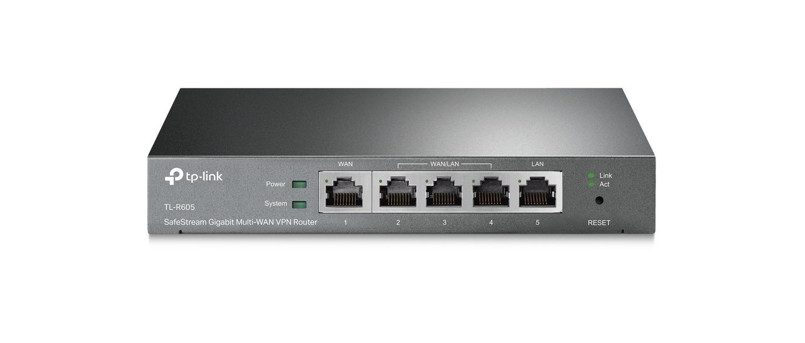
Installation GuideSafeStream Gigabit Multi-WAN VPN Router
LED Explanation
Power PWR/Power □On: Power onOff: Power off
System SYS/System□Flashing: System running normallyOn/Off: System running abnormally
Link/Act (for TL-R605) | SFP WAN (for TL-ER7206)
 On: There is a device connected to the port but not active.Off: There is no device connected to the corresponding port.Flashing: Transmitting or receiving data.
On: There is a device connected to the port but not active.Off: There is no device connected to the corresponding port.Flashing: Transmitting or receiving data.
Link/Act and 1000Mbps (for TL-ER7206)
 On: There is a device connected to the port and running at 1000 Mbps.Off: There is no device connected to the port or not running at 1000 Mbps.On: There is a device connected to the port but not active.Off: There is no device connected to the corresponding port.Flashing: Transmitting or receiving data.
On: There is a device connected to the port and running at 1000 Mbps.Off: There is no device connected to the port or not running at 1000 Mbps.On: There is a device connected to the port but not active.Off: There is no device connected to the corresponding port.Flashing: Transmitting or receiving data.
Note: For simplicity, we take TL-R605 as an example throughout this Guide.
Connection

Configuration
The router supports two configuration options:Standalone Mode: Configure and manage the router singly.Controller Mode: Configure and manage the network devices centrally. It is recommended in the large-scale network, which consists of mass devices such as access points, switches, and gateways.Note: When the router is managed by a controller, configurations of the router will be overridden by the controller.
Option 1: Standalone Mode
In Standalone Mode, use a computer to configure and manage the router.

- Connect a computer to a LAN port of the router with an RJ45 cable properly. If your computer is configured with a fixed IP, change it to Obtain an IP address automatically.
- Open a web browser and type the default management address 192.168.0.1 in the address field of the browser, then press the Enter key.
- Create a username and a password for subsequent login attempts and for security.
- Use the username and password set above to log in to the webpage.
- After a successful login, you can configure the function by clicking the setup menu on the left side of the screen.
For detailed configurations, refer to the User Guide of the router. The guide can be found on the download center of our official website:https://www.tp-link.com/support/download/.
Option 2: Controller Mode
Controller Mode applies to the large-scale network with mass devices. All devices can be centrally configured and monitored via Omada Software Controller, Omada Hardware Controller, or Omada Cloud-Based Controller. Before managing the router centrally, refer to Standalone Mode to launch the management page, go to Network > WAN, and configure the network to access the internet. For further configurations, please use the controller to manage the devices.
Topology 1: Via Omada Software/Hardware Controller

Via Omada Software Controller
- On the PC with Windows OS or Linux OS, download the Omada Software Controller installation file fromhttps://www.tp-link.com/support/download/omada-software-controller/.
- Run the file and follow the wizard to install the Omada Software Controller.
- Launch the Omada Software Controller and follow the step-by-step instructions to complete the Quick Setup. After the wizard is finished, a login screen will appear.
- Enter the username and password you created and click Log in. Then you can further configure the controller.
Omada Cloud ServiceAfter installing Omada Software Controller, you can remotely access and configure the controller through Omada Cloud Service. Follow the steps below.
- Enable Cloud Access on the setting page on the controller and bind a TP-Link ID to your controller. If you have configured this in the setup wizard, skip the step.
- Launch a web browser and enter https://omada.tplinkcloud.com in the address bar.
- Enter your TP-Link ID and password to log in. A list of controllers that have been bound with your TP-Link ID will appear. Then you can click Launch to further configure the controller.
Via Omada Hardware Controller (OC200/OC300)Omada Hardware Controller (OC200/OC300), which is pre-installed with Omada Software Controller, is a good alternative if you have no spare PC to keep running Omada Software Controller in the network. It needs to be purchased additionally. For more details, refer to the Installation Guide of Omada Hardware Controller.
Topology 2: Via Omada Cloud-Based Controller

Via Omada Cloud-Based Controller
- Launch the management page of the router in Standalone Mode, go to Controller Settings, and enable Cloud-Based Controller Management.
- Launch a web browser and enter https://omada.tplinkcloud.com in the address bar. Enter your TP-Link ID and password to log in.
- Click Add Controller and subscribe to Omada Cloud-Based Controller.Follow the instructions to choose a plan and complete the payment. Then wait until your controller is deployed.
- The controller will appear in the list once bound with your TP-Link ID. Click Launch and follow the step-by-step instructions to complete the Quick Setup. After the wizard is finished, log in via the created username and password. Click Devices on the side bar and then click Add Devices. Then you can add devices to the controller manually through the serial numbers at the bottom of the product.
**Omada AppWith Omada App, you can also manage your controller at a local site or a remote site via your mobile device.

Scan for Omada App: https://www.tp-link.com/common/app/omada/qrcode.php
For the detailed configurations, refer to the User Guide of the controller. The guide can be found on the download center of our official website:https://www.tp-link.com/support/download/.
![]() To ask questions, find answers, and communicate with TP-Link users or engineers, please visit https://community.tp-link.com to join TP-Link Community.
To ask questions, find answers, and communicate with TP-Link users or engineers, please visit https://community.tp-link.com to join TP-Link Community.![]() For technical support and other information, please visit https://www.tp-link.com/support, or simply scan the QR code.
For technical support and other information, please visit https://www.tp-link.com/support, or simply scan the QR code.
![]() If you have any suggestions or needs on the product guides, welcome to email [email protected].
If you have any suggestions or needs on the product guides, welcome to email [email protected].
EU Declaration of ConformityTP-Link hereby declares that the device is in compliance with the essential requirements and other relevant provisions of directives 2014/30/EU, 2014/35/EU, 2009/125/EC, 2011/65/EU, and (EU)2015/863.The original EU declaration of conformity may be found at https://www.tp-link.com/en/ce.

Safety Information
- Keep the device away from water, fire, humidity or hot environments.
- Do not attempt to disassemble, repair, or modify the device. If you need service, please contact us.
- Do not use damaged charger or USB cable to charge the device.
- Do not use any other chargers than those recommended.
- The adapter shall be installed near the equipment and shall be easily accessible.
- Place the device with its bottom surface downward.
References
[xyz-ips snippet=”download-snippet”]

